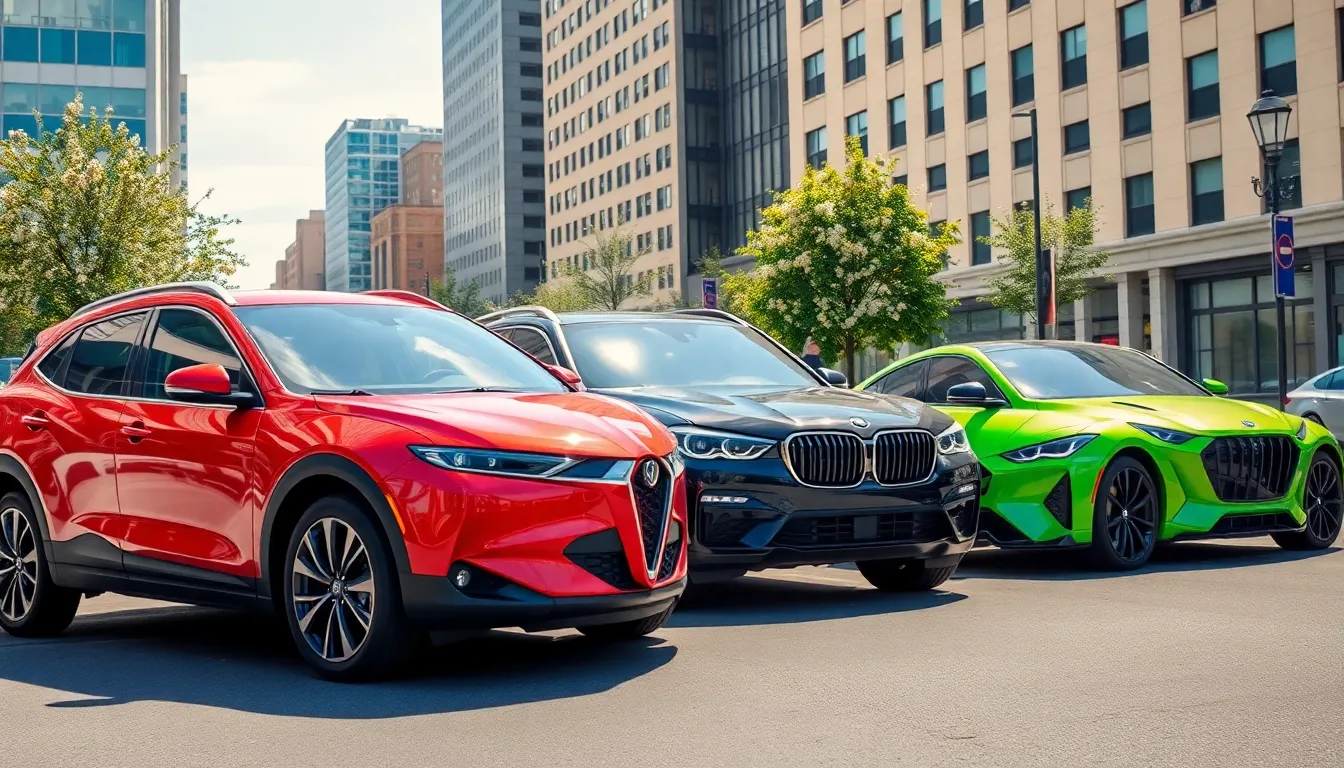When we think about choosing the perfect vehicle, understanding the different types of cars available becomes crucial for making an well-informed choice. Today’s automotive market offers an incredible variety of options, each designed to meet exact needs and lifestyles.
From compact sedans that deliver exceptional fuel economy to rugged SUVs built for adventure, we’ve got countless choices at our disposal. Whether you’re a daily commuter seeking efficiency, a growing family needing extra space, or an outdoor enthusiast craving off-road capabilities, there’s a vehicle type that perfectly matches your requirements.
We’ll explore the most popular car categories dominating today’s roads and help you discover which type aligns best with your driving habits, budget, and personal preferences. Understanding these distinctions will empower you to make a smart purchase that you’ll enjoy for years to come.
Sedan: The Classic Four-Door Family Vehicle
Sedans remain one of the most popular vehicle choices for families seeking a balanced combination of comfort, fuel efficiency, and practicality. These traditional four-door vehicles offer distinct advantages across different size categories to meet varying lifestyle needs.
Compact Sedans for Urban Living
Compact sedans deliver exceptional fuel economy and maneuverability for city dwellers who prioritize efficiency over space. Models like the Honda Civic, Toyota Corolla, and Nissan Sentra typically achieve 28-32 mpg in combined driving conditions while providing adequate passenger room for four adults. Their smaller footprint makes parallel parking and handling tight urban streets significantly easier compared to larger vehicles.
Storage capacity in compact sedans ranges from 12-15 cubic feet in most trunk spaces, offering enough room for groceries, work equipment, or weekend luggage. We find these vehicles particularly appealing for young professionals, small families, and anyone seeking an affordable entry point into sedan ownership. Pricing for new compact sedans typically starts around $20,000-25,000, making them accessible to budget-conscious buyers.
Full-Size Sedans for Maximum Comfort
Full-size sedans provide spacious interiors and premium features that rival luxury vehicles while maintaining reasonable operating costs. Popular models such as the Toyota Avalon, Chevrolet Impala, and Chrysler 300 offer generous legroom exceeding 40 inches in both front and rear seats, accommodating taller passengers with ease.
Engine options in full-size sedans often include powerful V6 configurations producing 280-300 horsepower, delivering smooth acceleration for highway merging and passing situations. Trunk capacity expands to 16-20 cubic feet in most full-size models, providing ample storage for large families or extended trips. We recommend these vehicles for families who frequently travel long distances, need maximum passenger comfort, or prefer the refined driving experience that comes with a larger wheelbase and advanced suspension systems.
Safety ratings consistently earn four or five stars across most full-size sedan models, featuring standard equipment like automatic emergency braking, blind spot monitoring, and adaptive cruise control.
SUV: The Versatile Sport Utility Vehicle
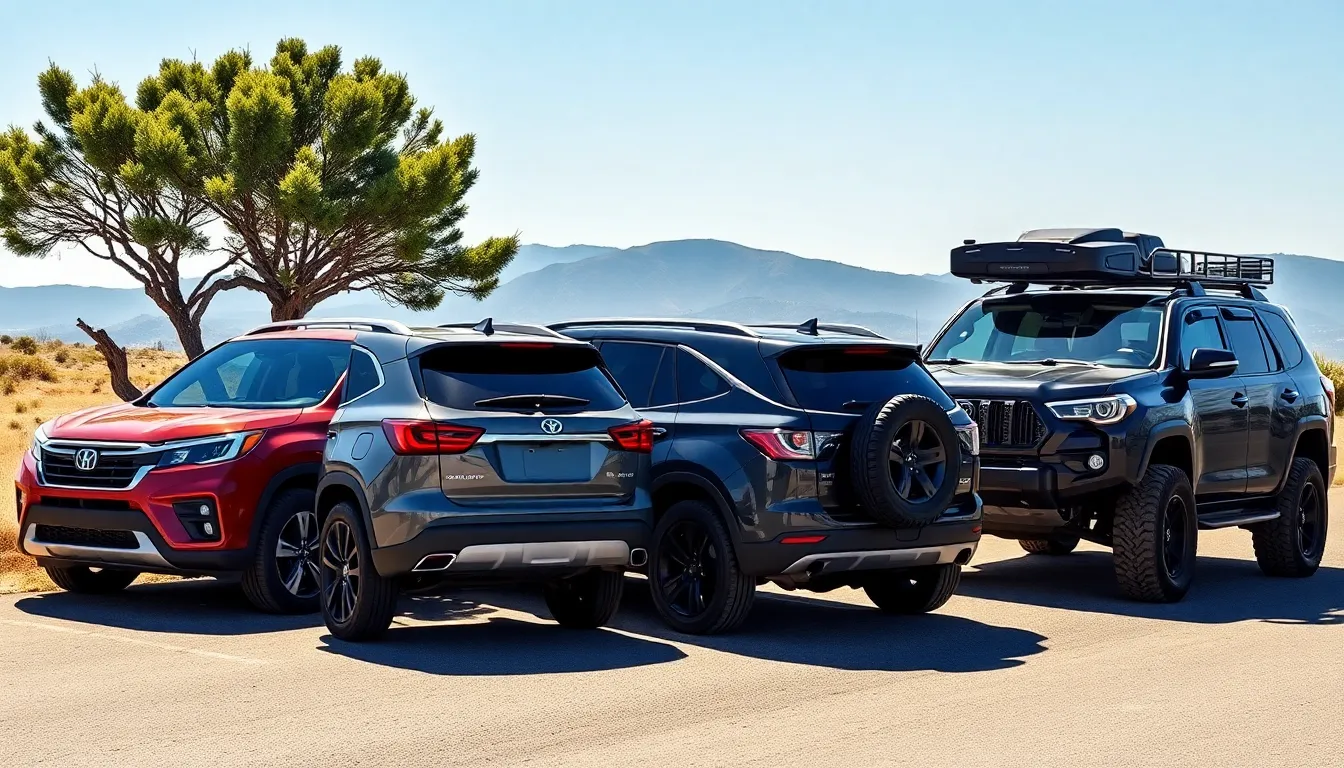
Sport utility vehicles have revolutionized how we think about everyday transportation by combining the comfort of a sedan with the capability of a truck. These versatile vehicles deliver higher seating positions, increased cargo space, and enhanced traction control for various driving conditions.
Compact SUVs for City Driving
Compact SUVs excel in urban environments where parking spaces are limited and fuel efficiency matters most. Models like the Honda CR-V and Toyota RAV4 offer excellent maneuverability through crowded city streets while maintaining the elevated driving position that SUV enthusiasts prefer. These vehicles typically achieve 28-32 mpg in combined driving conditions, making them economical choices for daily commuting.
Storage capacity in compact SUVs ranges from 25-39 cubic feet with rear seats folded down, providing ample room for grocery runs or weekend getaways. Advanced safety features like automatic emergency braking and blind spot monitoring come standard on most 2023 models. Ground clearance of 8-9 inches allows these SUVs to handle light off road conditions and navigate over curbs with confidence.
Mid-Size SUVs for Family Adventures
Mid-size SUVs deliver the perfect balance between passenger comfort and cargo versatility for growing families. Popular models such as the Toyota Highlander and Honda Pilot accommodate up to 8 passengers across three rows of seating. These vehicles feature 16-84 cubic feet of cargo space depending on seat configuration, easily fitting strollers, sports equipment, and vacation luggage.
Towing capacity reaches 3,500-5,000 pounds in most mid-size SUVs, enabling families to pull small boats, camping trailers, or utility trailers for home improvement projects. All wheel drive systems provide enhanced traction during winter weather conditions and light trail adventures. Safety ratings consistently earn 5 stars from NHTSA testing, with advanced driver assistance technologies protecting precious cargo on family road trips.
Full-Size SUVs for Heavy-Duty Needs
Full-size SUVs dominate when maximum towing capacity and passenger space become non negotiable requirements. Vehicles like the Chevrolet Tahoe and Ford Expedition deliver 8,400-9,300 pound towing capacity for large boats, horse trailers, or construction equipment. Interior space accommodates up to 9 passengers with generous legroom and headroom across all three seating rows.
Cargo capacity expands to 122-144 cubic feet with all rear seats folded flat, creating space comparable to a small moving truck. These SUVs feature powerful V8 engines producing 355-420 horsepower for confident highway merging and mountain climbing performance. Advanced four wheel drive systems with multiple terrain modes handle everything from sandy beaches to rocky mountain trails with remarkable capability.
Hatchback: The Practical Compact Option

Hatchbacks offer the perfect balance between sedan comfort and SUV versatility in a compact package. These vehicles feature a rear door that opens upward to reveal a flexible cargo space that connects directly to the passenger compartment.
Three-Door Hatchbacks for Style
Three-door hatchbacks prioritize sporty aesthetics and ever-changing performance over maximum practicality. Models like the MINI Cooper and Volkswagen GTI showcase sleek profiles with extended front doors that provide easier access to rear seats. Performance enthusiasts gravitate toward these vehicles because they typically weigh less than their five-door counterparts, resulting in improved handling and acceleration.
Styling advantages become immediately apparent when we examine the uninterrupted side profile that three-door configurations create. Manufacturers often equip these models with sportier suspension setups and more aggressive body kits to enhance their athletic appearance. Urban drivers appreciate the compact dimensions that make parking in tight city spaces effortless while maintaining the cargo flexibility that defines the hatchback category.
Five-Door Hatchbacks for Functionality
Five-door hatchbacks maximize everyday usability through enhanced passenger access and superior cargo management. Popular models such as the Honda Civic Hatchback and Mazda3 provide rear passengers with dedicated doors that eliminate the awkward climbing required in three-door versions. Families benefit from the increased convenience when loading car seats, groceries, and daily essentials.
Cargo versatility reaches its peak in five-door configurations where rear seats fold completely flat to create expansive loading areas. These vehicles typically offer 20-25 cubic feet of cargo space with seats up and can accommodate items up to 50+ cubic feet when seats fold down. Commuters value the ability to transport everything from weekly shopping trips to weekend sports equipment without sacrificing daily driving comfort or fuel efficiency ratings that often exceed 30 mpg in combined driving conditions.
Coupe: The Sporty Two-Door Performance Car
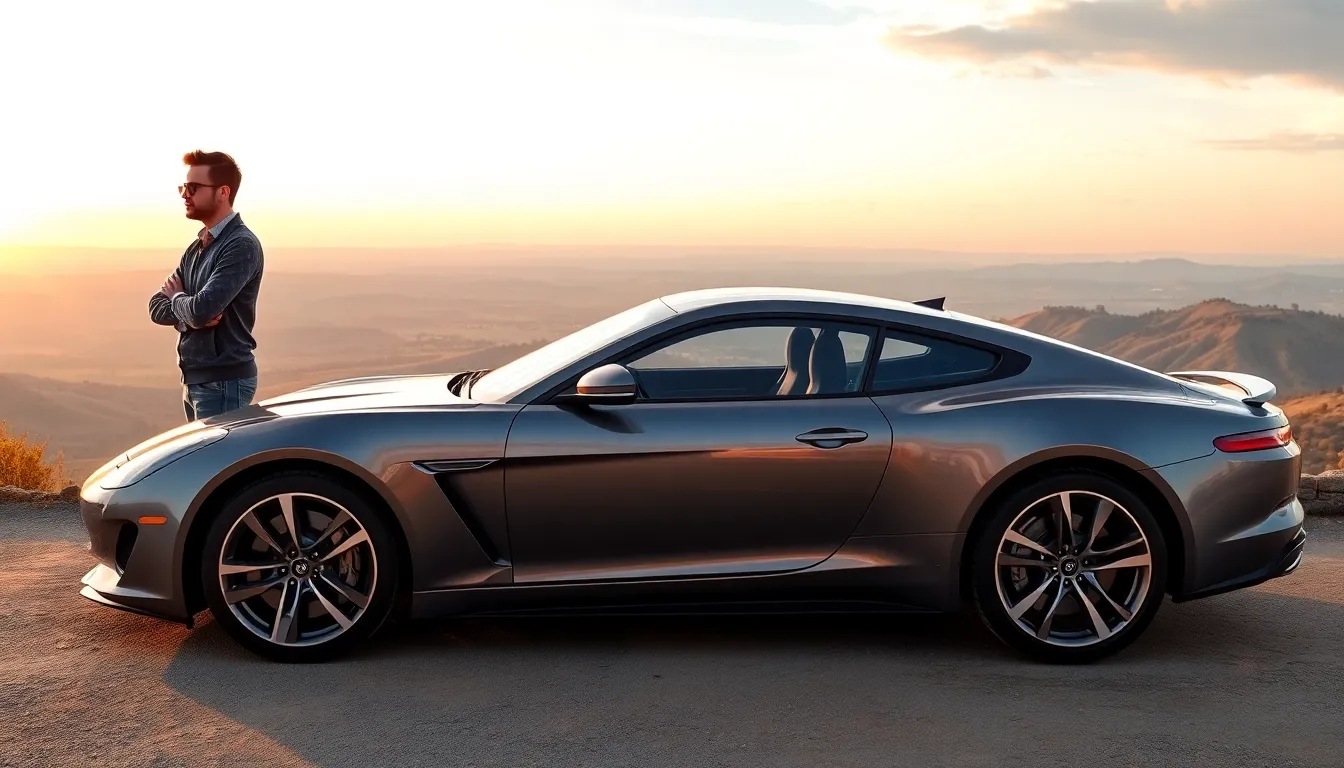
Coupes represent the perfect fusion of style and performance in automotive design. These two-door vehicles prioritize driving dynamics and aesthetic appeal over maximum passenger space.
Luxury Coupes for Premium Driving
Luxury coupes deliver sophisticated comfort alongside impressive performance capabilities. BMW’s 4 Series and Mercedes-Benz C-Class Coupe exemplify this category with premium leather interiors, advanced infotainment systems, and turbocharged engines producing 248-382 horsepower.
Premium features distinguish these vehicles from standard coupes through enhanced materials and technology. We find heated and ventilated seats, panoramic sunroofs, and adaptive suspension systems standard in models like the Audi A5 and Lexus RC. Interior craftsmanship includes hand-stitched leather, real wood trim, and crystal-clear audio systems that create an elevated driving environment.
Performance remains paramount even though the luxury focus. Most luxury coupes achieve 0-60 mph acceleration in 5.1-6.2 seconds while maintaining fuel efficiency ratings of 22-28 mpg combined. Advanced all-wheel-drive systems in vehicles like the Genesis G70 provide confident handling in various weather conditions.
Sports Coupes for Racing Enthusiasts
Sports coupes emphasize raw performance and track-ready capabilities above comfort considerations. The Chevrolet Camaro SS and Ford Mustang GT represent quintessential American muscle with V8 engines generating 450-480 horsepower and aggressive exhaust notes.
Track-focused engineering defines this segment through lightweight construction and aerodynamic enhancements. Models like the Porsche 718 Cayman and Nissan 370Z feature sport-tuned suspensions, limited-slip differentials, and performance tires designed for maximum grip. Weight distribution optimization ensures precise cornering and responsive steering feedback.
Racing-inspired features set these vehicles apart from luxury-oriented coupes. We see Brembo brake systems, launch control modes, and adjustable driving dynamics in cars like the Subaru BRZ and Toyota GR86. Performance metrics showcase 0-60 mph times ranging from 4.2-6.1 seconds depending on engine configuration and drivetrain layout.
Convertible: The Open-Air Driving Experience

Convertibles offer an unmatched connection between driver and environment that transforms every journey into an adventure. We’ll explore how these open-air vehicles deliver freedom and excitement through their distinctive roof designs.
Soft-Top Convertibles for Classic Appeal
Soft-top convertibles embody automotive romance with fabric or vinyl roofs that fold elegantly behind the rear seats. Canvas and vinyl materials create that authentic wind-in-your-hair experience that drivers have cherished for decades. Models like the Mazda MX-5 Miata and BMW Z4 showcase this traditional approach with lightweight construction that enhances handling dynamics.
Maintenance requirements for soft tops include regular cleaning and waterproofing treatments every 6-12 months. Fabric roofs typically last 7-10 years with proper care, while vinyl versions often extend to 10-15 years. Weather protection remains excellent when seals stay in good condition, though winter storage helps preserve material integrity.
Operating mechanisms use hydraulic or electric systems that deploy the roof in 15-30 seconds. Manual operation still exists in some sports cars like the Lotus Elise, where drivers personally engage with the folding process. Storage space reduces by approximately 20-30% when the soft top retracts, but trunk access remains functional in most designs.
Hard-Top Convertibles for Modern Convenience
Hard-top convertibles feature retractable metal roofs that provide coupe-like security and sedan-level noise insulation. Steel and aluminum panels fold into complex mechanisms that store the roof sections in dedicated compartments. Examples include the Mercedes-Benz SL-Class and BMW 8 Series Convertible, which demonstrate sophisticated engineering answers.
Weather sealing matches traditional hardtop vehicles because metal panels create complete barriers against rain and wind. Insulation properties allow year-round driving comfort with minimal road noise at highway speeds. Security levels equal closed vehicles since metal roofs resist break-in attempts better than fabric alternatives.
Technology integration includes sensors that detect obstacles during roof operation and automatic systems that close windows during deployment. Conversion times range from 20-45 seconds depending on complexity, with some luxury models offering operation while driving at speeds up to 30 mph. Weight penalties typically add 200-400 pounds compared to soft-top versions, though structural rigidity often improves overall driving dynamics.
Truck: The Heavy-Duty Workhorse
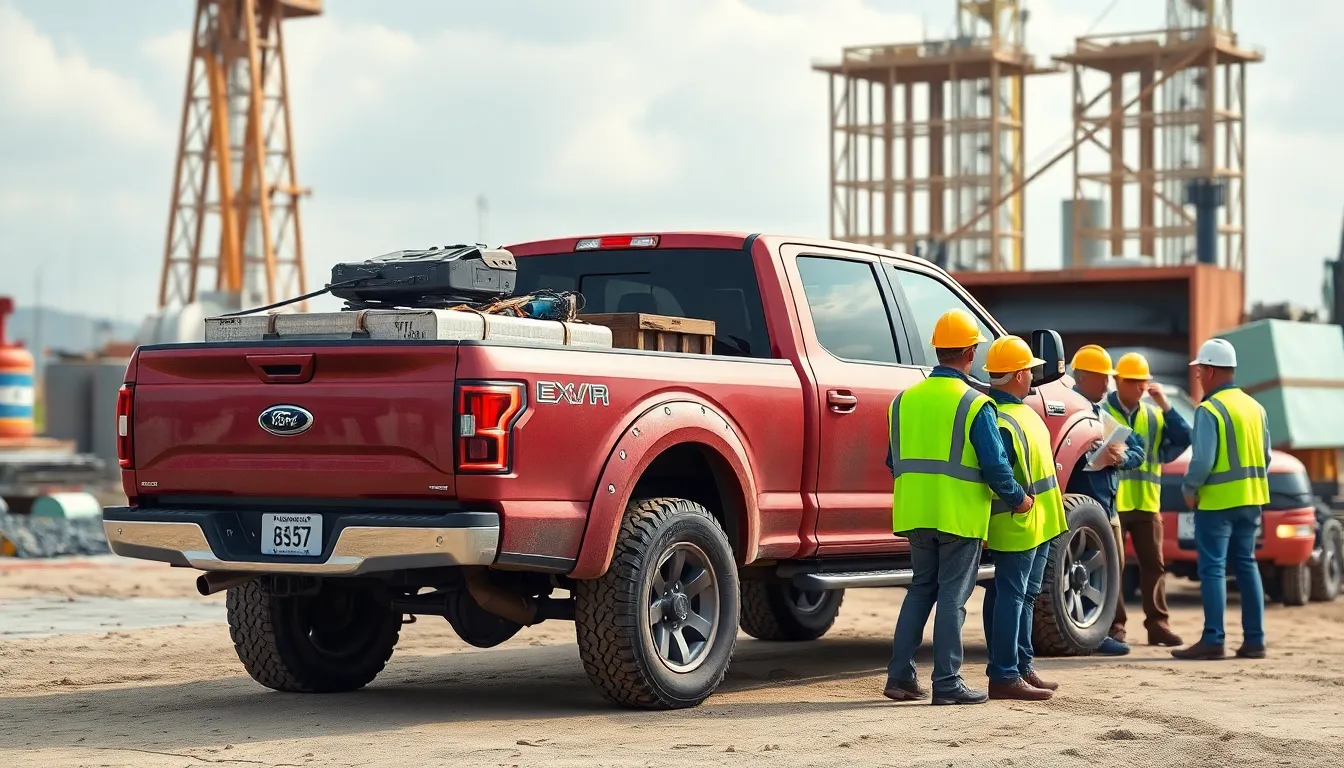
Trucks stand as the ultimate workhorses of the automotive industry, combining rugged durability with impressive capability. We find these versatile vehicles essential for both professional contractors and weekend warriors who demand reliable performance.
Compact Trucks for Light Tasks
Compact trucks deliver the perfect balance between everyday drivability and practical utility for lighter work demands. Models like the Toyota Tacoma and Ford Ranger excel in urban environments while maintaining respectable fuel economy ratings of 20-24 mpg. Their manageable size makes parking easier in tight spaces, and their shorter wheelbases improve maneuverability around construction sites or suburban neighborhoods.
| Compact Truck Model | Towing Capacity | Payload Capacity | Fuel Economy (Combined) |
|---|---|---|---|
| Toyota Tacoma | 6,800 lbs | 1,685 lbs | 22 mpg |
| Ford Ranger | 7,500 lbs | 1,860 lbs | 23 mpg |
| Chevrolet Colorado | 7,700 lbs | 1,550 lbs | 21 mpg |
Versatility defines these midsize trucks, as they handle weekend camping trips with equal confidence as daily commutes. Bed lengths typically range from 5 to 6 feet, providing adequate space for lumber, sporting equipment, or landscaping materials. Advanced safety features like automatic emergency braking and blind spot monitoring come standard on most models, ensuring peace of mind during both work and leisure activities.
Full-Size Trucks for Maximum Capability
Full-size trucks represent the pinnacle of towing capacity and hauling power, designed for the most demanding professional applications. The Ford F-150, Chevrolet Silverado 1500, and Ram 1500 dominate this segment with their impressive specifications and proven reliability records. These heavy duty workhorses can tow between 11,000 and 14,000 pounds when properly equipped, making them ideal for contractors, farmers, and recreational vehicle enthusiasts.
| Full-Size Truck Model | Max Towing Capacity | Max Payload | Bed Length Options |
|---|---|---|---|
| Ford F-150 | 14,000 lbs | 3,325 lbs | 5.5′, 6.5′, 8′ |
| Chevrolet Silverado 1500 | 13,300 lbs | 2,280 lbs | 5’8″, 6’6″, 8’2″ |
| Ram 1500 | 12,750 lbs | 2,300 lbs | 5’7″, 6’4″, 8’0″ |
Professional contractors rely on these trucks for their spacious crew cabs that comfortably seat six adults while maintaining substantial cargo capacity. Engine options typically include efficient V6 powerplants for daily driving and robust V8 engines for maximum performance when hauling heavy trailers or equipment. Modern full-size trucks also feature advanced technology like trailer brake controllers, backup cameras, and smartphone integration to enhance both productivity and convenience on the job site.
Station Wagon: The Extended Family Hauler
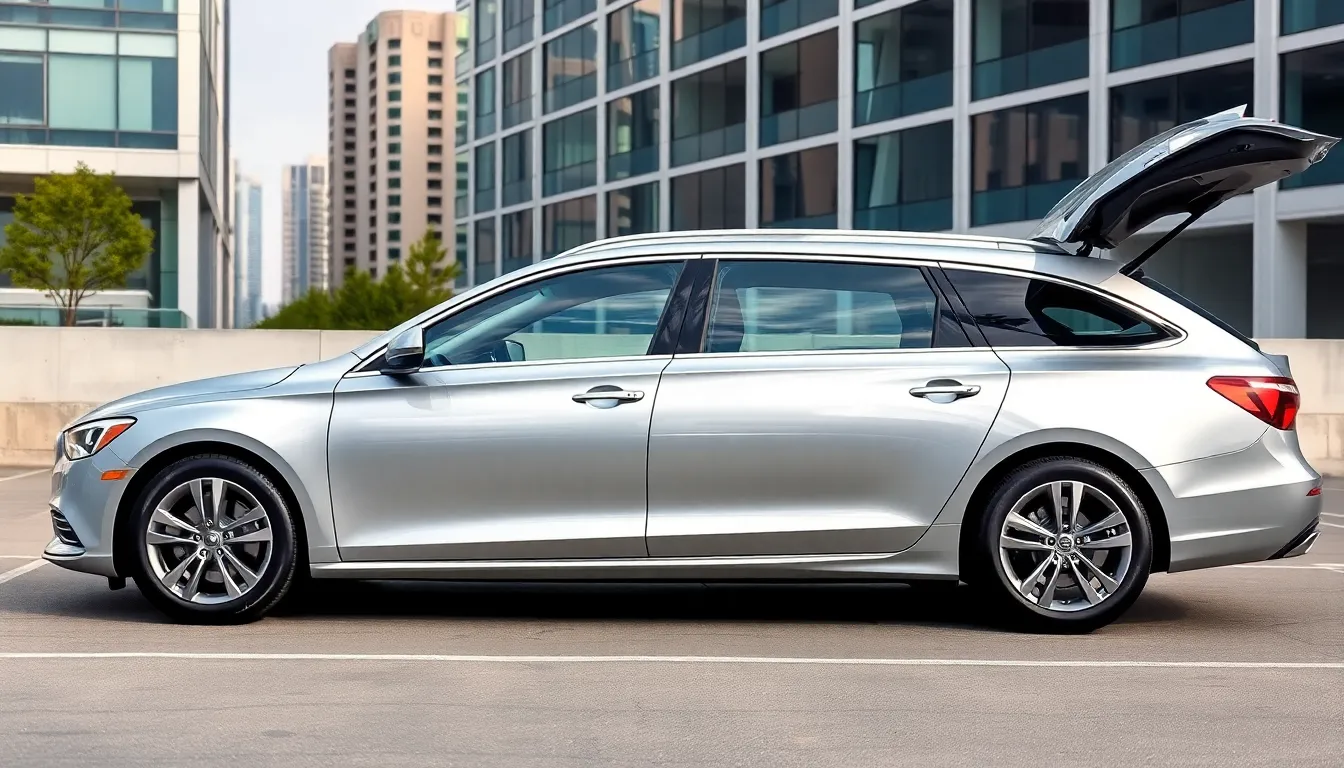
Station wagons bridge the gap between sedan comfort and SUV versatility, offering extended cargo space without compromising on fuel efficiency. These practical vehicles have evolved to meet modern family needs while maintaining their signature elongated profile.
Compact Wagons for Efficient Transport
Compact wagons deliver exceptional fuel economy while maximizing cargo capacity for everyday family needs. Models like the Subaru Outback and Volkswagen Golf SportWagen achieve impressive mileage ratings of 26-33 mpg, making them ideal for budget conscious families who refuse to sacrifice utility.
Cargo space in compact wagons typically ranges from 35-75 cubic feet with rear seats folded, providing ample room for groceries, sports equipment, and weekend getaway luggage. The Subaru Outback offers 35.4 cubic feet behind the rear seats and 75.7 cubic feet with seats down, while maintaining standard all wheel drive capability for year round confidence.
Maneuverability becomes a key advantage in urban environments where compact wagons navigate tight parking spaces and city streets more easily than their SUV counterparts. Ground clearance in models like the Subaru Outback reaches 8.7 inches, providing light off road capability without the bulk of traditional SUVs.
Safety ratings consistently earn top marks from both IIHS and NHTSA, with many compact wagons featuring standard advanced driver assistance systems including automatic emergency braking and blind spot monitoring.
Luxury Wagons for Premium Cargo Space
Luxury wagons combine sophisticated comfort with expansive hauling capacity, creating the perfect solution for affluent families who demand both prestige and practicality. Premium models like the Mercedes Benz E Class Wagon and BMW 5 Series Touring offer refined interiors with genuine leather appointments and advanced infotainment systems.
Performance capabilities in luxury wagons often rival sports sedans, with engines producing 300-400 horsepower while maintaining smooth, quiet operation during daily commutes. The Mercedes Benz E53 AMG Wagon delivers 429 horsepower through its twin turbocharged inline six engine, accelerating from 0-60 mph in just 4.4 seconds.
Cargo capacity in luxury wagons typically exceeds 60 cubic feet with seats folded, accompanied by power operated tailgates and configurable loading floors for enhanced convenience. Premium materials like aluminum trim and soft close mechanisms elevate the ownership experience beyond basic transportation.
Technology integration includes features like air suspension systems that automatically adjust ride height for loading, panoramic sunroofs, and premium sound systems with 15+ speakers for audiophile quality entertainment during long family trips.
Electric Vehicle: The Eco-Friendly Future of Transportation

Electric vehicles represent the automotive industry’s most important shift toward sustainable transportation. We’re witnessing unprecedented growth in electric car adoption as manufacturers prioritize environmental responsibility and fuel efficiency.
Battery Electric Vehicles for Zero Emissions
Battery electric vehicles operate exclusively on electric power stored in rechargeable lithium ion batteries. Models like the Tesla Model 3, Nissan Leaf, and Chevrolet Bolt EV produce absolutely no tailpipe emissions during operation.
Range capabilities have dramatically improved over recent years. The Tesla Model S achieves up to 405 miles per charge, while the BMW iX delivers 324 miles of range. Most battery electric vehicles now exceed 250 miles per charge, making them suitable for daily commuting and long distance travel.
Charging infrastructure continues expanding across urban and rural areas. Level 1 charging using standard household outlets provides 3-5 miles of range per hour, while Level 2 home charging stations deliver 25-40 miles of range per hour. DC fast charging networks can add 200+ miles of range in just 30 minutes.
Operating costs remain significantly lower than gasoline vehicles. We calculate that electricity costs approximately $0.04-0.08 per mile compared to $0.12-0.15 per mile for gasoline. Maintenance requirements are minimal since battery electric vehicles have fewer moving parts than traditional engines.
Hybrid Electric Vehicles for Extended Range
Hybrid electric vehicles combine gasoline engines with electric motors to maximize fuel efficiency. Popular models include the Toyota Prius, Honda Accord Hybrid, and Toyota Camry Hybrid, which achieve fuel economy ratings between 48-58 mpg.
Traditional hybrids switch seamlessly between electric and gasoline power. The electric motor assists during acceleration and handles low speed driving, while the gasoline engine activates for highway speeds and extended range. This combination eliminates range anxiety while reducing emissions by 30-50% compared to conventional vehicles.
Plug in hybrids offer the best of both worlds with extended electric only range. Models like the Toyota Prius Prime and Honda Clarity provide 25-47 miles of pure electric driving before the gasoline engine engages. Daily commuters can complete most trips using only electric power while maintaining the security of gasoline backup for longer journeys.
Regenerative braking systems capture energy normally lost during deceleration. This technology converts kinetic energy back into electricity, storing it in the battery pack to improve overall efficiency. Hybrid vehicles require no external charging infrastructure, making them ideal transition vehicles for drivers new to electrification.
Luxury Car: The Premium Driving Experience
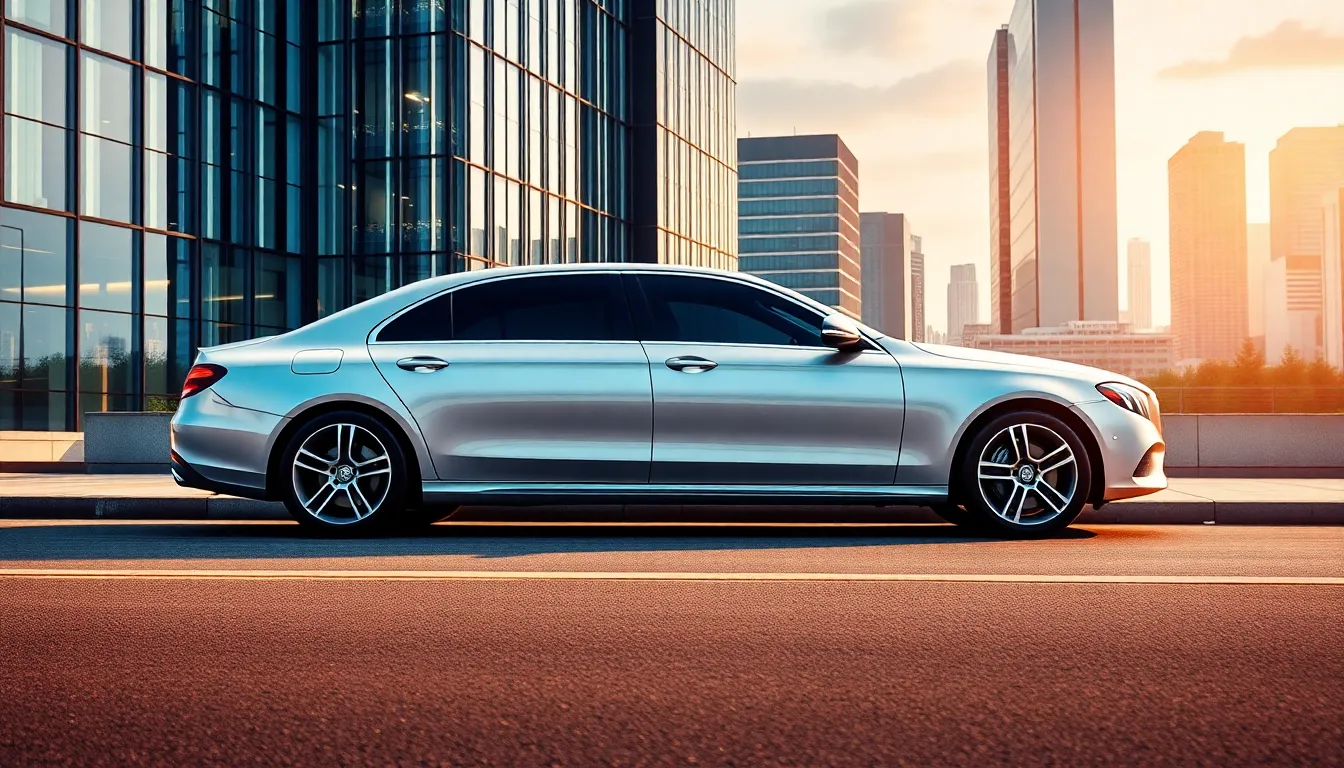
Luxury cars represent the pinnacle of automotive engineering and sophisticated design that transforms every journey into a premium experience. These vehicles combine cutting-edge technology with exquisite craftsmanship to deliver unparalleled comfort and performance.
Executive Sedans for Business Professionals
Executive sedans provide the perfect balance of professional image and driving excellence that business leaders require. These vehicles feature sophisticated designs and advanced technology that make a powerful impression at corporate meetings and client presentations.
Performance stands out in models like the BMW 5 Series and Mercedes-Benz E-Class, which deliver smooth acceleration and precise handling for confident highway cruising. Interior quality reaches exceptional standards with genuine leather upholstery, real wood trim, and premium materials throughout the cabin. Technology features include intuitive infotainment systems, wireless smartphone integration, and advanced driver assistance systems that enhance both productivity and safety during business travel.
We find that executive sedans like the Audi A6 and Genesis G90 offer spacious rear seats with executive-level comfort for important passengers. These vehicles typically achieve fuel efficiency ratings of 22-28 mpg, making them practical for daily commuting and long-distance business trips. Safety ratings consistently earn top scores from IIHS and NHTSA, providing peace of mind for busy professionals who spend important time on the road.
Ultra-Luxury Vehicles for Ultimate Comfort
Ultra-luxury vehicles redefine automotive excellence through extraordinary attention to detail and uncompromising quality standards. These prestigious automobiles cater to discerning buyers who demand the finest materials and most advanced features available in the automotive industry.
Craftsmanship reaches artisanal levels in vehicles like the Rolls-Royce Ghost and Bentley Flying Spur, which feature hand-stitched leather interiors and custom wood veneers selected from the industry’s finest forests. Performance capabilities include powerful engines that deliver effortless acceleration while maintaining whisper-quiet cabin environments for ultimate serenity. Customization options allow owners to personalize every aspect of their vehicle, from exterior paint colors to interior trim selections.
We observe that ultra-luxury sedans like the Mercedes-Maybach S-Class and BMW 7 Series offer massage seats, ambient lighting systems, and climate-controlled cup holders that create spa-like environments for passengers. These vehicles incorporate advanced air suspension systems that automatically adjust to road conditions, ensuring smooth rides regardless of surface quality. Price points typically range from $100,000 to $500,000, reflecting the exclusive nature and exceptional quality of these automotive masterpieces.
Technology integration includes features like gesture controls, voice recognition systems, and panoramic sunroofs that enhance the driving experience through intuitive operation. Maintenance programs often include concierge services and loaner vehicles, ensuring owners never experience inconvenience during service appointments.
Sports Car: The High-Performance Thrill Machine
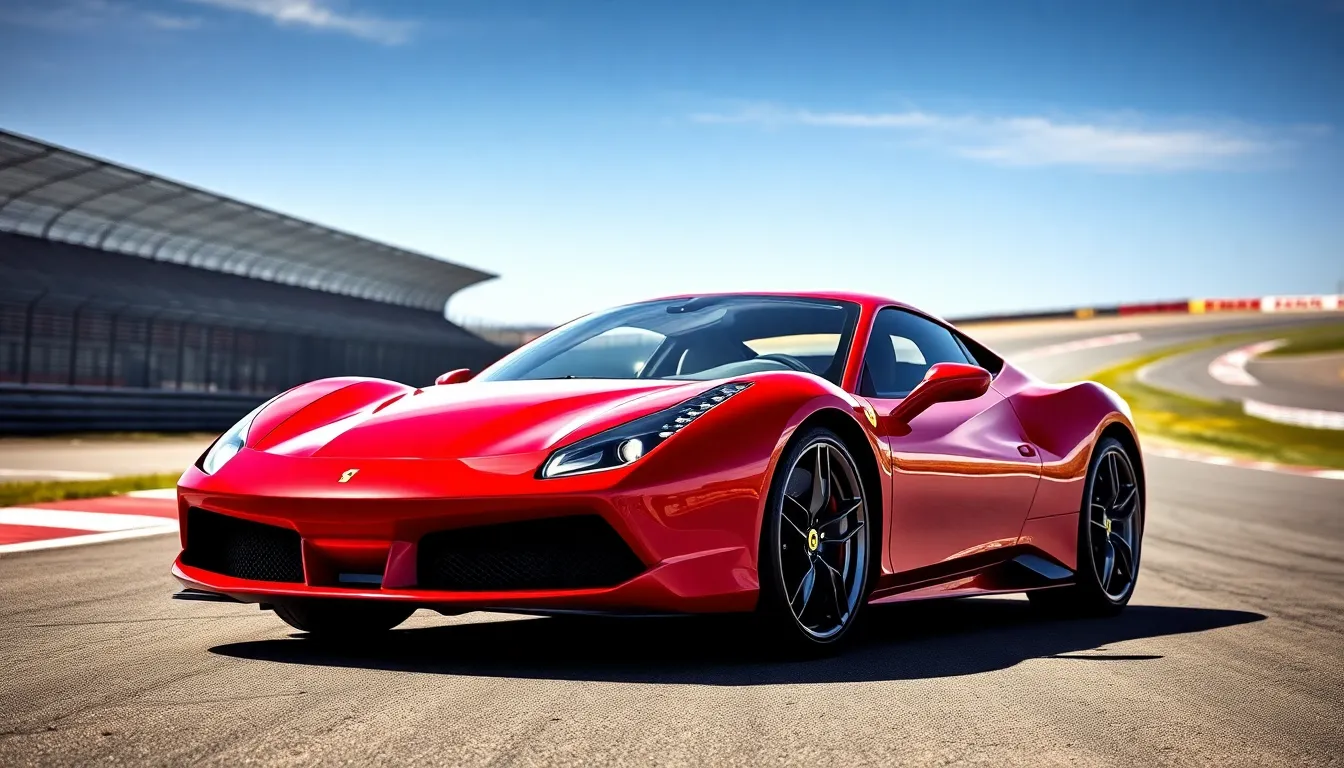
Sports cars deliver pure driving excitement through their combination of powerful engines, precision handling, and aerodynamic design. We categorize these high-performance vehicles into distinct configurations that define their character and capabilities.
Mid-Engine Sports Cars for Track Performance
Mid-engine sports cars position their powerplants behind the driver for optimal weight distribution and superior handling dynamics. Exemplary models like the McLaren 720S and Ferrari 488 GTB demonstrate this configuration’s advantages through their lightning-quick directional changes and exceptional cornering stability. Engineers design these vehicles with track-focused aerodynamics that generate important downforce at highway speeds, improving grip when aggressive driving demands maximum performance.
Weight distribution in mid-engine layouts typically achieves a near-perfect 50/50 front-to-rear balance, allowing drivers to exploit the full potential of high-performance tires. Acceleration figures for these machines often exceed expectations, with many models reaching 0-60 mph in under 3.5 seconds while maintaining predictable behavior at triple-digit speeds. Pricing reflects their sophisticated engineering, generally ranging from $200,000 to $500,000 for new examples.
Maintenance costs align with their track-ready nature, requiring specialized technicians familiar with complex cooling systems and advanced electronic stability controls. Track day enthusiasts particularly appreciate the instant throttle response and precise steering feedback that defines the mid-engine experience. Racing pedigree influences every aspect of their design, from carbon fiber construction to advanced telemetry systems that monitor vehicle dynamics.
Front-Engine Sports Cars for Classic Design
Front-engine sports cars maintain traditional proportions that many enthusiasts consider the essence of automotive beauty and mechanical simplicity. Distinguished models such as the Chevrolet Corvette Stingray and Porsche 911 exemplify this timeless configuration through their distinctive long-hood aesthetics and balanced driving characteristics. These vehicles offer more accessible entry points into sports car ownership, with pricing typically starting around $60,000 for well-equipped new models.
Storage capacity exceeds mid-engine alternatives due to their conventional trunk placement, making them practical choices for weekend touring and daily driving scenarios. Performance capabilities remain impressive, with many front-engine sports cars achieving 0-60 mph times under 4.0 seconds while delivering fuel economy ratings that can exceed 25 mpg on highway journeys. Maintenance accessibility improves significantly over mid-engine designs, as service technicians can reach most components without extensive disassembly procedures.
Handling characteristics lean toward progressive predictability rather than razor-sharp precision, appealing to drivers who prefer manageable power delivery and forgiving limit behavior. Aftermarket support flourishes for popular front-engine platforms, enabling owners to customize performance parameters and aesthetic elements according to personal preferences. Heritage and tradition influence their appeal, connecting modern drivers to decades of sports car evolution and racing success stories.
Conclusion
Choosing the right vehicle eventually comes down to understanding your exact needs and lifestyle requirements. We’ve covered everything from fuel-efficient sedans and versatile SUVs to luxury vehicles and high-performance sports cars to help you navigate today’s diverse automotive industry.
Whether you’re prioritizing environmental sustainability with an electric vehicle or seeking maximum utility with a full-size truck your perfect match exists within these categories. The key is honestly evaluating your daily driving habits budget constraints and long-term goals.
We encourage you to test drive multiple options within your preferred category before making a final decision. Remember that the best car isn’t necessarily the most expensive or feature-packed – it’s the one that seamlessly integrates with your lifestyle and brings you satisfaction every time you get behind the wheel.
Frequently Asked Questions
What are the main differences between compact and full-size sedans?
Compact sedans like the Honda Civic and Toyota Corolla prioritize fuel efficiency and maneuverability for urban driving, making them ideal for young professionals and small families. Full-size sedans such as the Toyota Avalon offer more spacious interiors, generous legroom, and powerful engine options, better suited for families prioritizing comfort and long-distance travel.
Which SUV size is best for urban driving?
Compact SUVs like the Honda CR-V and Toyota RAV4 are ideal for urban driving. They offer excellent maneuverability in city traffic while achieving impressive fuel efficiency of 28-32 mpg. These vehicles provide the elevated driving position and cargo space of an SUV without the bulk of larger models.
What’s the difference between three-door and five-door hatchbacks?
Three-door hatchbacks like the MINI Cooper focus on sporty aesthetics and performance with lightweight design and improved handling. Five-door hatchbacks such as the Honda Civic Hatchback prioritize practicality with easier rear passenger access and superior cargo management while maintaining excellent fuel efficiency over 30 mpg.
Are electric vehicles cheaper to operate than gas cars?
Yes, electric vehicles are generally cheaper to operate than gasoline vehicles. EVs have lower fuel costs since electricity is less expensive than gasoline, and they require less maintenance due to fewer moving parts. Many modern EVs now exceed 250 miles per charge, with expanding charging infrastructure supporting widespread adoption.
What’s the difference between hybrid and plug-in hybrid vehicles?
Traditional hybrids like the Toyota Prius combine gasoline engines with electric motors and charge through regenerative braking only. Plug-in hybrids can be charged from external power sources and typically offer 20-50 miles of electric-only range before switching to hybrid mode, providing greater flexibility and reduced emissions.
Which truck type is better for everyday driving?
Compact trucks like the Toyota Tacoma and Ford Ranger are better for everyday driving, achieving 20-24 mpg fuel economy while still offering practical utility. They balance work capability with comfortable daily commuting, making them versatile for both professional tasks and personal use without the bulk of full-size trucks.
What makes luxury cars worth their higher price?
Luxury cars offer premium materials, advanced technology, superior craftsmanship, and enhanced comfort features like massage seats and air suspension. Executive sedans provide professional image with 22-28 mpg efficiency, while ultra-luxury vehicles offer extraordinary customization and cutting-edge technology, justifying their $100,000-$500,000 price range.
How do I choose between a station wagon and an SUV?
Station wagons offer sedan-like fuel efficiency (26-33 mpg) with extended cargo space, making them ideal for budget-conscious families. SUVs provide higher ground clearance, towing capacity, and all-weather capability but typically consume more fuel. Choose based on whether you prioritize fuel economy or off-road capability and towing needs.

